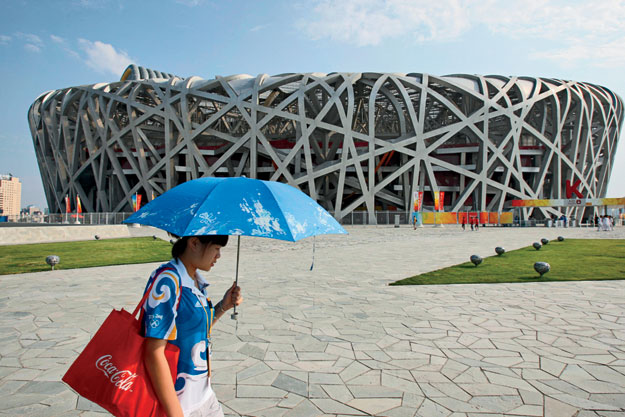 |
| The Beijing National Stadium Photo © John Gichigi |
China's powers that be probably wish it wasn't Ai Weiwei—the artist, activist, and, after his nearly three-month detention by Chinese authorities last year, international cause célèbre—who collaborated with Herzog & de Meuron on the design of Beijing's Olympic National Stadium. But at first glance, the Bird's Nest, as it's better known, is the gift that keeps on giving: Four years after the Beijing Olympics, crowds still flock to the Olympic Green to snap photos in front of the iconic structure, and pay the 50 RMB entrance fee (about eight dollars) to venture inside. The stadium's image remains ubiquitous, and latticework patterns reminiscent of its outer shell continue to pop up as motifs in trendy interiors throughout the Chinese capital.
But though the post-Olympics Bird's Nest has hosted a number of major events—including a performance of Turandot staged by the director Zhang Yimou—it's uncertain if it will avoid the white elephant fate of so many other cities' Olympic venues. The status of a proposal to transform the stadium into a shopping and entertainment complex is unclear. Meanwhile, the conversion of part of the neighboring National Aquatics Center, or “Water Cube,” into a phantasmagoric “Happy Water Park” has been a mixed success.
Perhaps a turning point for the Olympic Green will come when a planned museum complex is completed on-site. If all goes well, the centerpiece will be a new building for the National Art Museum of China (NAMOC), a coveted commission that Frank Gehry, Zaha Hadid, and Jean Nouvel are currently competing for. At 1.4 million square feet, the new NAMOC will no doubt be spectacular. But the bigger question is how they will keep it filled with art and people.

